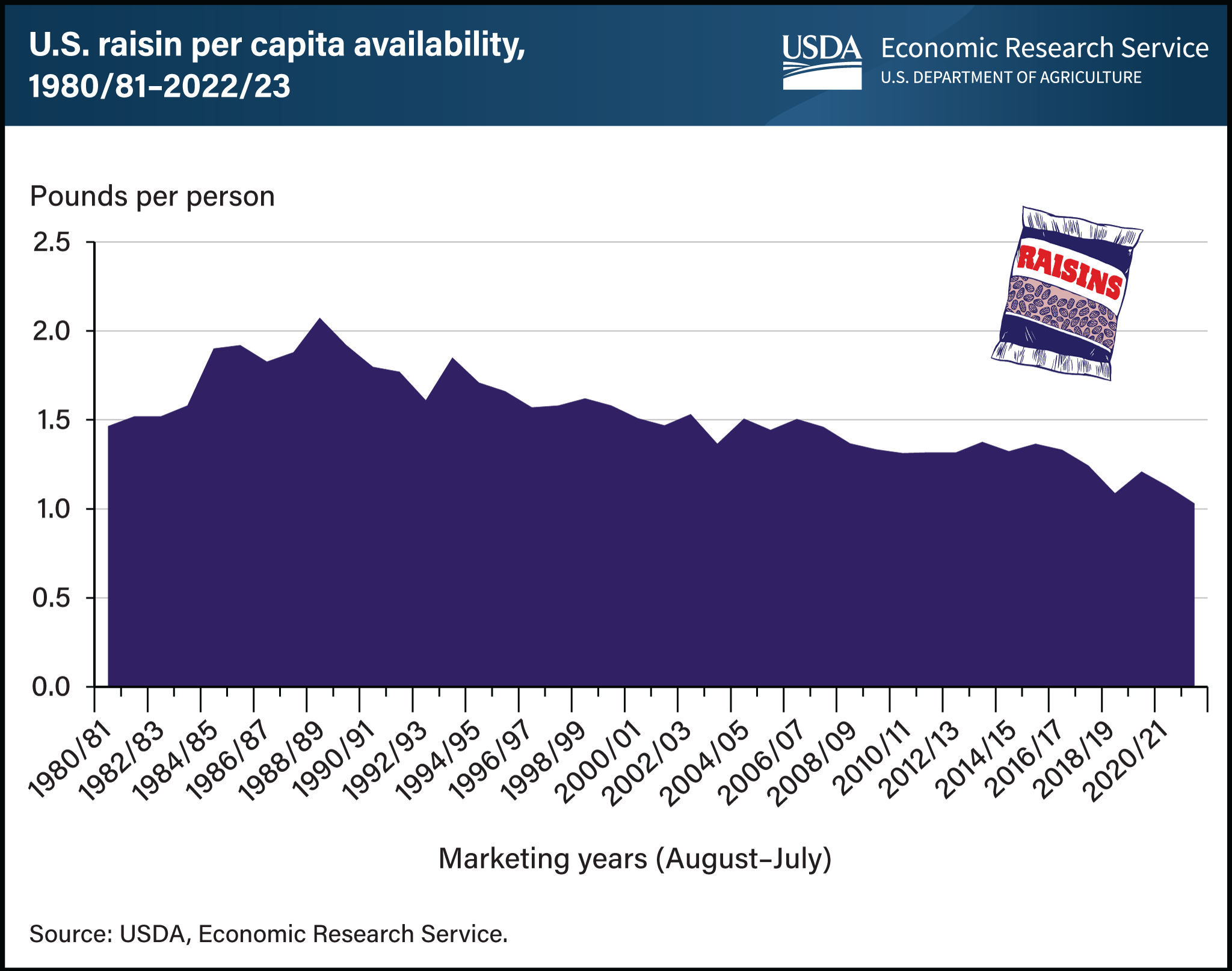U.S. raisin availability per capita dries up
- by Catharine Weber and Skyler Simnitt
- 5/11/2023

Consumers are eating fewer raisins, based on U.S. per capita availability data. In the past 10 years, acreage planted to raisin-type grapes declined more than 33 percent in California, which produces almost all U.S. raisins. Average per capita availability (a proxy for consumption) of dried raisins fell 15 percent in that time, according to USDA, Economic Research Service (ERS) estimates. This trajectory continues the gradual decline observed since availability peaked at more than 2 pounds per person in the late 1980s to a current low of 1.1 pounds. Some of the reasons behind the decline may include greater year-round availability of fresh fruit and competition from other dried fruit, such as cranberries, cherries, and blueberries. Pressure faced by U.S. raisin growers is not limited to declining per capita availability, however. Higher labor costs and lower priced exports from Turkey have also challenged the U.S. raisin industry in recent years. Along with an overall decrease in acreage and production, the United States has reduced both total export volume and the share of domestic production going to exports. This chart is drawn from ERS’ Fruit and Tree Nuts Outlook, March 2023.

